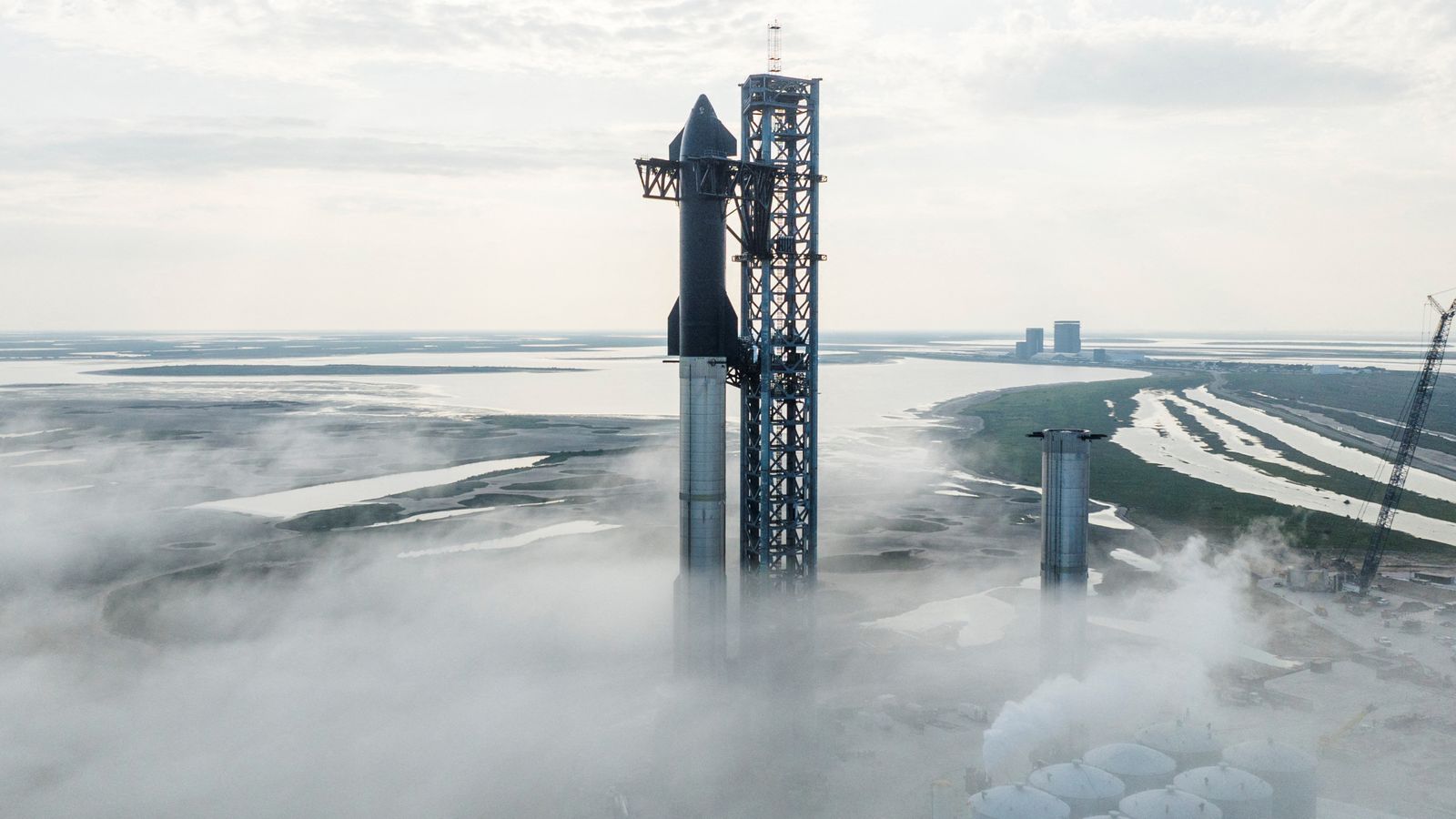SpaceX’s launch of the world’s biggest and most powerful rocket system has been postponed after it experienced a glitch minutes before take-off.
The launch, from the southern tip of Texas, near the Mexican border, had been due to take place at any point in a two-hour launch window after 8am local time.
But, the countdown was stopped with 40 seconds to go.
Then, after the launch window elapsed, the firm revealed a valve on the Starship rocket was found to be frozen.
SpaceX chief Elon Musk said another launch would take place “in a few days” and the company had “learned a lot” from today’s test.
The California-based space company announced that it was calling off another flight attempt for at least 48 hours.
The Federal Aviation Administration (FAA) had issued SpaceX with a licence to put its most powerful rocket system through its paces, saying it met all safety and environmental requirements.
Musk set low expectations on Sunday night.
“Success is not what should be expected,” he told a private Twitter audience, saying the best-case scenario would provide crucial data about how the vehicle ascends to space and how it will fly back to Earth.
“Probably tomorrow will not be successful. It’s just a very fundamentally difficult thing.”
Sitting on top of a huge booster rocket, called Super Heavy, reaching a combined height of 120 metres, Starship is the world’s biggest and most powerful rocket system. It was first unveiled in 2019.
Once up and running, it will be used for taking satellites into orbit – and SpaceX founder Musk has said it will eventually carry astronauts to the moon and even Mars.
The billionaire said any launch this week only has a 50% chance of success, but he thinks there’s an 80% chance of it reaching orbit by the end of the year.
Science and technology editor
You have to feel for the thousands of people who’ve travelled down to a remote part of south Texas to watch the Starship launch.
With less than 10 minutes to go, the decision was made to “scrub” the attempt due to a problem with a frozen valve loading some of the super-cooled liquid propellant.
In the world of space launches, this is no surprise at all.
Even Elon Musk estimated a 50% chance of a successful launch today.
But even a fairly mundane technical hitch will have taught engineers more about their spacecraft system, increasing the chances of success next time.
To put space delays in context, NASA’s Artemis 1 rocket suffered successive delays over 10 weeks due to fuel loading issues before it eventually launched last November.
SpaceX has said it doesn’t see another attempt at launching Starship for at least 48 hours.
The Super Heavy booster, which has 33 rocket engines, had a stationary launch test back in February, and generated enough power to reach orbit.
How will the first orbital test work?
Starship is due to be carried skyward by a prototype launch vehicle called Booster 7 from a pad in Brownsville, Texas.
The rocket system’s second stage – the craft that would carry a crew of astronauts in the future – would then be deployed and complete a full orbit of the Earth, before re-entering the atmosphere and splashing down into the Pacific.
Meanwhile, the first stage would be discarded in the Gulf of Mexico.
No landings will be attempted in the debut test flight, and no satellites or people will be on board.
Read more:
Mission to search for life on Jupiter’s moons launched
Supermassive black hole pictures
Ahead of the planned launch on Monday, a notice posted by the FAA suggested Tuesday and Wednesday as backup dates.
The licence issued by the US flight regulator lasts five years, by which time NASA hopes to have used Starship to transport astronauts to the lunar surface for the first time in more than 50 years via its Artemis programme.
The privately-funded moon mission is also aiming to take a crew to the moon and back aboard Starship.











